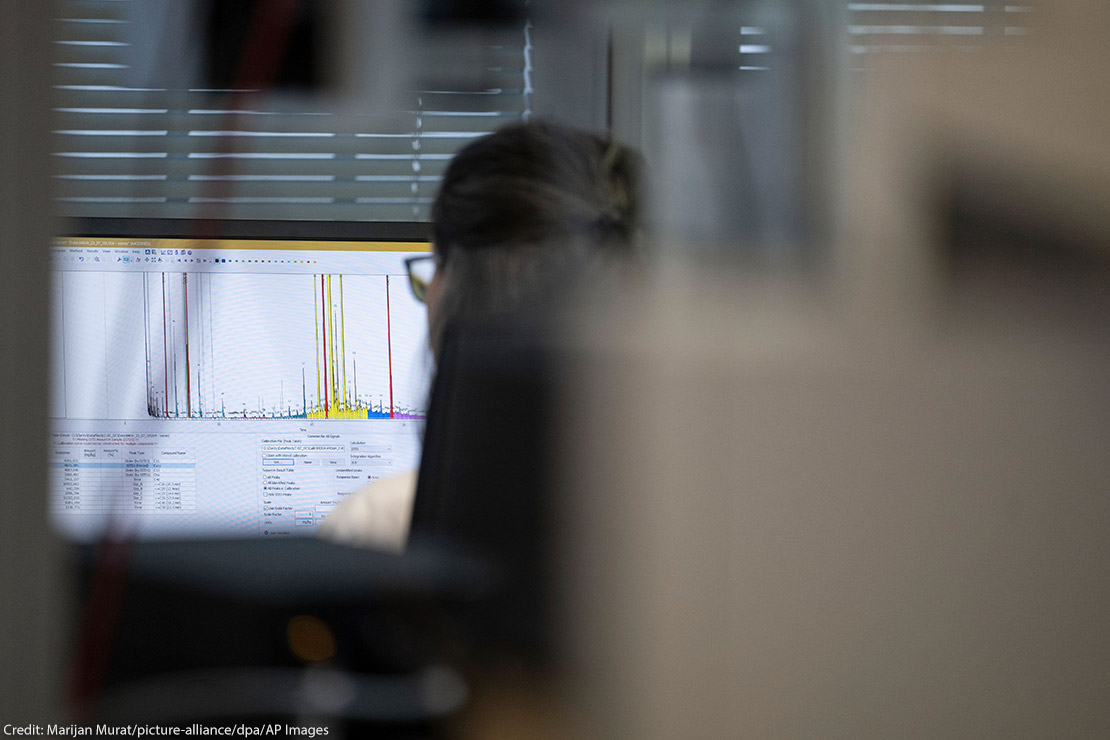Powerful new technologies continue to emerge that make it possible to conduct surveillance in all kinds of new ways. But just because something can be done, does not mean that it should be. The current Chinese government shows us what it looks like when there is no space between what can be done, and what is done — when technology is used to monitor and control with no counterbalance or restraint. But many American workplaces are also “anything goes” environments when it comes to surveillance, where employers face few constraints on their use of cameras, keystroke loggers, and other sensors to monitor and track their workers.
Last week The New York Times published a fascinating story on the growth of worker micro-surveillance, which has seen an eightfold increase in funding in just the last five years. Zephyr Teachout also published a broad and devastating piece on the same trend in The New York Review of Books this month.
Last year, I wrote about Amazon’s use of AI cameras to micro-monitor the drivers of its trucks, and how less powerful workers will be the first to be placed under oppressive AI surveillance microscopes — but that ultimately, in one form or another, such monitoring is likely to affect everyone. Indeed, one of the points of the Times story is that this is happening now:
“Architects, academic administrators, doctors, nursing home workers and lawyers described growing electronic surveillance over every minute of their workday. They echoed complaints that employees in many lower-paid positions have voiced for years.”
As with Amazon drivers, many of these professional workers are subject to second-by-second monitoring by cameras, as well as keyboard and mouse micro-trackers, which mercilessly log any diversion of attention from workers’ keyboards, and score them, and base their evaluations and pay on such metrics.
Obviously, employers have legitimate interests in ensuring efficiency and productivity. But we shouldn’t allow electronic surveillance that either goes beyond legitimate management concerns or becomes so intense that it creates an oppressive atmosphere of pervasive surveillance or intimidation.
There are at least three reasons why this is a bad idea.
1. The technologies are often inaccurate and unfair.
While new technologies allow for workers’ physical movements to be tracked in increasingly exacting ways, the Times story makes clear that they remain crude and inaccurate when it comes to interpreting such data, and therefore unfair to workers in many respects. AI algorithms are very unreliable at interpreting human meaning and activity, yet are increasingly being trusted with judgments about people — including in workplaces. Sometimes the problems are even more basic; for example, the Times interviewed social workers, therapists, and hospice chaplains who were considered not to be working when they were away from their keyboards — even though a vital part of their jobs is actually talking to people.
2. Surveillance is bad for people.
Intense surveillance, in addition to just feeling bad, is actively unhealthy for workers. Years of studies have shown that oppressive surveillance (or even just perceptions of surveillance) causes stress and anxiety for people. As Teachout summarizes,
“Electronic surveillance puts the body of the tracked person in a state of perpetual hypervigilance, which is particularly bad for health…. Employees who know they are being monitored can become anxious, worn down, extremely tense, and angry. Monitoring causes a release of stress chemicals and keeps them flowing, which can aggravate heart problems. It can lead to mood disturbances, hyperventilation, and depression.”
She points to a study of 2,100 workers at call centers, which are known for their heavy use of electronic monitoring. The study found that 87 percent of the workers reported high or very high stress levels, with a remarkable 50 percent of them reporting having been prescribed medication for stress or anxiety.
3. Surveillance is often counter-productive
There is good evidence that workplace surveillance can be counterproductive for employers — and not just because it makes workers unhappy. It can create what business professor Ifeoma Ajunwa describes as an “opposition feeling, where employees view the employer not as benevolent, but as dictators.” And it can inhibit the agency that makes workers perform better. One study found that when workers in a Chinese factory were shielded from surveillance by their bosses, their productivity went up. The workers were less creative and efficient when they were nervous or feeling they were being watched, the study concluded.
Of course, some companies won’t care about any of this, and will prefer to reach for brutal efficiency gains by burning through miserable workers. Teachout argues that this is the favored approach of Jeff Bezos and Amazon. At the same time, many employers won’t ever institute this kind of monitoring, whether out of tradition, because they understand that it’s counterproductive, or because their workers have enough market or union power to push back.
Overall, however, it’s clear that oppressive levels of monitoring at work are now becoming increasingly common. That’s likely the result not just of new technologies but also increased monopolization and over 40 years of political dominance by pro-business politicians (since the end of what American historians call the “New Deal Order” in 1980). Policymakers need to do something about this problem — not only by directly regulating the use of such surveillance in the workplace, but also by broadening protections for workers to organize and fight for workplace democracy.

